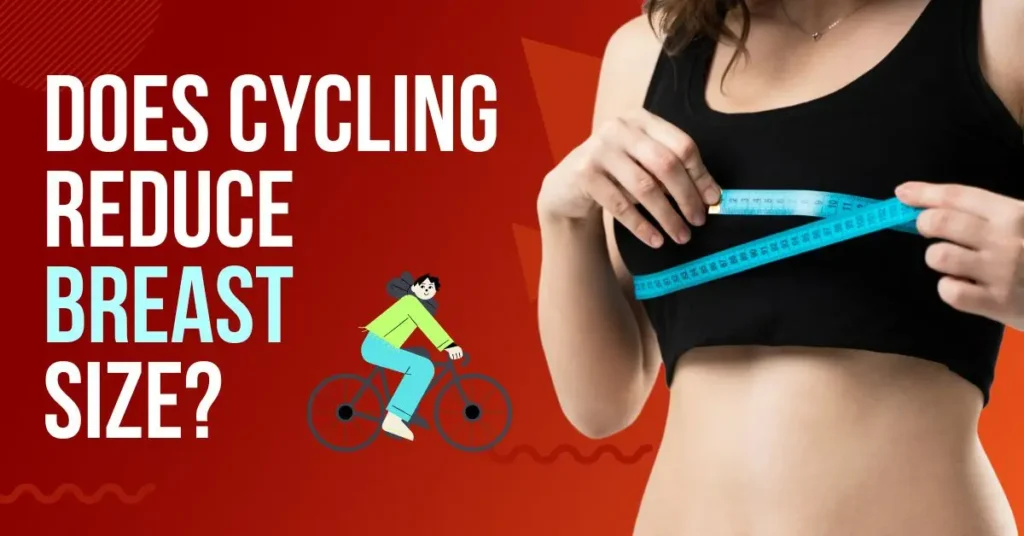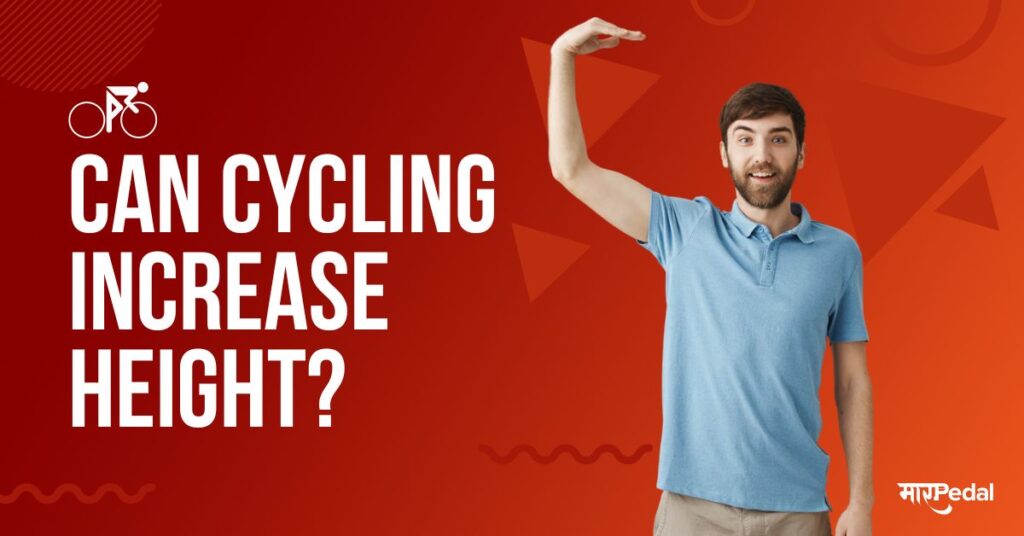
When it comes to fitness and body shaping, cycling is often lauded for its cardiovascular benefits and its role in weight management. However, a curious question arises: does cycling reduce breast size? This article delves into the science behind this query, exploring how cycling and other physical activities can impact breast size. We’ll bust some common myths, share insights from health professionals, and look at personal experiences to provide a comprehensive understanding.
Understanding Breast Composition
Fat and Glandular Tissue in Breasts
Breasts are composed of fat, glandular tissues, and connective tissues. The ratio of these components varies from person to person and is influenced by genetics, hormonal changes, and overall body fat percentage. It’s crucial to understand this composition to appreciate how and why breast size can change with physical activities like cycling.
How Physical Activity Affects Breast Tissue
Physical activity doesn’t directly target breast tissue. However, it can influence the body fat percentage, which in turn, may affect breast size. The extent of this impact varies significantly among individuals based on their unique body compositions.
The Impact of Cycling on Body Fat
Aerobic Exercise and Fat Burning
Cycling is a form of aerobic exercise known for its effectiveness in burning calories and reducing body fat. This reduction in fat, depending on where the body tends to lose fat, can indirectly lead to changes in breast size.
Cycling’s Role in Overall Fat Reduction
Regular cycling can lead to a decrease in overall body fat. Since breasts contain a significant amount of fat, this overall reduction can sometimes be observed as a decrease in breast size, particularly in those who naturally store more fat in the chest area.
Cycling and Breast Size – The Connection

Indirect Effects of Cycling on Breast Size
While cycling targets lower body muscles, its role in overall fat loss can indirectly affect breast size. As you lose fat from your entire body, some of this reduction may come from breast tissue, which is partly fatty in nature. However, the extent of this change varies and is not universal.
Personal Accounts and Studies
There’s a mix of personal accounts and limited studies on this topic. Some individuals report a noticeable decrease in breast size after taking up cycling, while others see little to no change. This variation underscores the personalized nature of physical responses to exercise.
Factors Influencing Breast Size Change
Genetics and Breast Size
Genetics play a pivotal role in determining breast size and how the body responds to exercise. Some people may naturally have more glandular tissue in their breasts, which won’t diminish with fat loss, while others with fattier breast composition may notice more significant changes.
Diet and Hormonal Changes
Diet and hormonal fluctuations also significantly impact breast size. Nutritional choices can affect body fat distribution, while hormonal changes, such as those during menstruation, pregnancy, or menopause, can cause temporary or permanent changes in breast size.
Other Exercises Impacting Breast Size
Comparison with High-Impact Exercises
High-impact exercises like running or jumping can have a more pronounced effect on the body, including the breasts, compared to low-impact activities like cycling. The intensity and nature of these exercises can lead to different outcomes in terms of body fat reduction and breast size changes.
Strength Training and Breast Appearance
Strength training, particularly exercises focusing on the pectoral muscles, can alter the appearance of the breasts. While it doesn’t directly reduce breast size, toning the chest muscles can make the breasts appear more lifted and defined.
Protecting Breast Health During Exercise
Importance of Proper Support
During any exercise, including cycling, wearing the right support is crucial for breast health. A well-fitting sports bra can minimize movement and provide support, reducing the risk of discomfort or sagging.
Maintaining Breast Shape and Health
Apart from wearing proper gear, exercises that strengthen the chest and back muscles can help in maintaining the shape and health of the breasts. Regular exercise, balanced with appropriate rest and recovery, is vital for overall breast health.
Myth-Busting: Common Misconceptions

Separating Fact from Fiction
There are many myths surrounding exercise and breast size. It’s a myth that exercises like cycling can drastically reduce breast size. While there’s some correlation due to fat loss, the change is not as significant as some believe.
Expert Opinions and Advice
Health and fitness experts emphasize the importance of a balanced view. Rather than focusing solely on breast size, it’s healthier to concentrate on overall physical fitness and body positivity.
Personal Stories and Experiences

Real-Life Examples
Diverse experiences from individuals who cycle regularly offer valuable insights. Some report a slight decrease in breast size, aligning with overall body fat reduction, while others notice no change. These stories highlight the individual nature of the body’s response to cycling.
Diverse Perspectives
Gathering perspectives from a wide range of cyclists, from casual riders to professional athletes, shows a spectrum of experiences. Understanding these varied outcomes helps in forming a realistic expectation regarding cycling and changes in breast size.
Professional Insights
Medical Experts’ Views
Healthcare professionals often point out that while exercise like cycling can result in overall fat reduction, its direct impact on breast size is usually minimal. They emphasize that changes in breast size are more closely related to overall body weight changes than to specific exercises.
Fitness Trainers’ Recommendations
Fitness trainers generally advise focusing on the overall health benefits of cycling, rather than expecting it to target specific body areas. They stress the importance of a holistic approach to fitness, where the focus is on health and well-being, rather than just physical appearance.
Balanced Approach to Fitness and Body Image

Embracing Body Positivity
In the context of exercise and body image, it’s vital to cultivate a mindset of body positivity. Understanding and accepting your body’s unique response to exercise can lead to a healthier relationship with fitness and self-image.
Holistic Health Perspectives
A holistic approach to health considers the mental, emotional, and physical aspects of well-being. When engaging in activities like cycling, it’s important to focus on overall health benefits, such as improved cardiovascular health, enhanced mood, and increased stamina, rather than just physical changes.
Diet’s Role in Body Composition
Nutritional Considerations for Cyclists
A balanced diet is crucial for anyone engaging in regular cycling. The right nutrition can support energy levels, aid in recovery, and contribute to overall body composition, including factors like breast size.
See also: Can we do Cycling after Dinner?
Foods Impacting Breast Size
While no specific diet can increase or decrease breast size significantly, overall dietary patterns that lead to weight gain or loss can affect breast size. A nutritious, balanced diet supports a healthy body composition.
Long-Term Effects of Regular Cycling
Body Changes Over Time
With long-term cycling, the body undergoes various changes, including improved muscle tone, enhanced cardiovascular health, and potential changes in body fat distribution. These changes can subtly affect breast size over time.
Sustainable Health Benefits
The sustainable health benefits of regular cycling, such as reduced risk of chronic diseases, improved mental health, and enhanced physical endurance, are far more significant than any potential changes in breast size.
When to Expect Changes
Understanding Timeframes and Body Responses
Physical changes from cycling, like any exercise, take time and vary from person to person. It’s important to set realistic expectations and understand that changes in body composition, including breast size, occur gradually.
Realistic Expectations
Setting realistic expectations about what cycling can and cannot do for body composition is crucial. While it’s an effective way to improve overall fitness, expecting it to target specific areas like the breasts may lead to disappointment.
Conclusion
Cycling is a wonderful exercise for overall health and fitness. While it can lead to changes in body composition, including potential reductions in breast size due to overall fat loss, these changes are highly individual and often minimal. The focus should remain on the myriad health benefits cycling offers, embracing a balanced approach to fitness and body image.
FAQs
Can cycling reduce breast size?
Yes, cycling is considered an effective exercise to help reduce breast size. The repetitive motion involved works the chest muscles and helps tone the area around the breasts. As the chest muscles strengthen and tighten, it can lead to lifting, firming, and reduction in breast size.
Is it scientifically possible to reduce breast size?
Yes, it is scientifically possible for exercises that work the chest muscle and burn fat cells in the breast area to result in the reduction of breast size. As the fat cells shrink and the skin tightens, the breast tissue has less volume and becomes smaller.
What is the best exercise to reduce breast size?
Some of the best exercises to reduce breast size include:
- Cycling – Works the chest muscles while burning calories and body fat.
- Pushups – Tones the pectoral muscles behind the breast. Inclined pushups are beginner friendly.
- Chest presses – Uses resistance bands, dumbbells or machines to build chest muscle.
- Swimming – Works all the upper body muscles. Different strokes target different areas.
How many days does it take to reduce breast size?
With regular cardio and strength training targeting the chest muscles, a noticeable difference in breast size reduction can be seen within 4-6 weeks. However, the time frame varies based on body type, diet, genetics and other factors. Staying consistent in the workout regimen is key.
What reduces breast size fast?
Some of the most effective ways to reduce breast size fast include:
- High intensity interval training (HIIT) – Quick, intense bursts of exercise followed by short rest periods. Accelerates fat burning.
- Strength training targeting chest muscles – Pushups, chest presses, rowing moves. Builds muscle to firm and tighten breast tissue.
- Low calorie, nutrient-rich diet – Eliminates excess fat cells throughout the body including breasts.
- Massage – Stimulates collagen production. Tightens skin and supports breast tissue.
How much breast size can be reduced by exercise?
Most experts suggest that properly following targeted exercises for breast reduction can cumulatively result in a noticeable decrease of 1/2 to 1 cup size depending on one’s current breast size. Greater reductions are typically temporary through caloric deficit. But exercise helps counteract loosening of breast skin and tissue post-weight loss.
Important Note: This article is intended for informational purposes only and does not constitute professional medical advice. The insights and information shared here are based on general research and personal experiences. If you have any health concerns or questions about how exercise may impact your body, please consult with a professional healthcare provider. Your doctor or a qualified medical professional can provide personalized advice and guidance tailored to your specific health needs.






